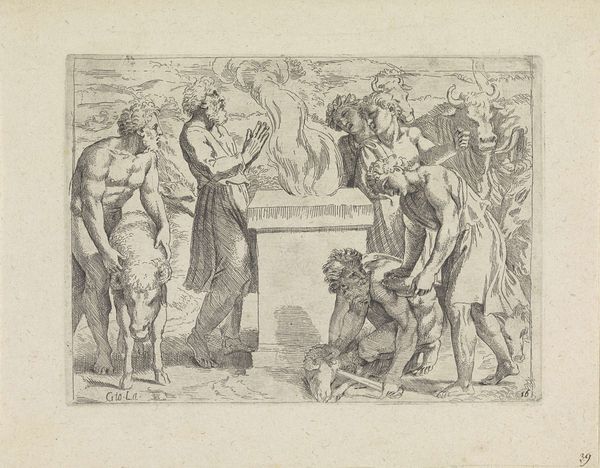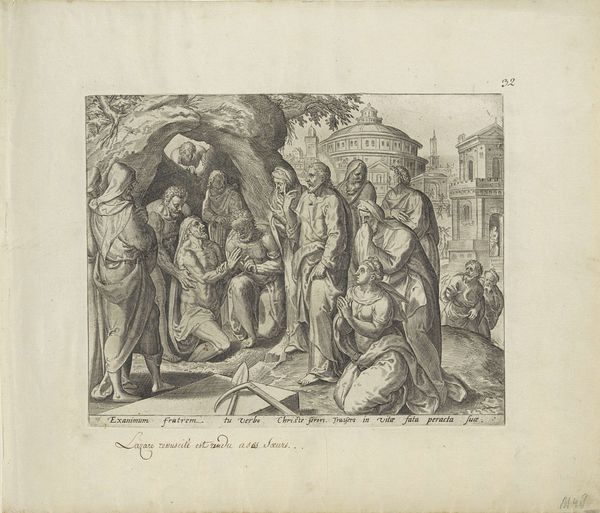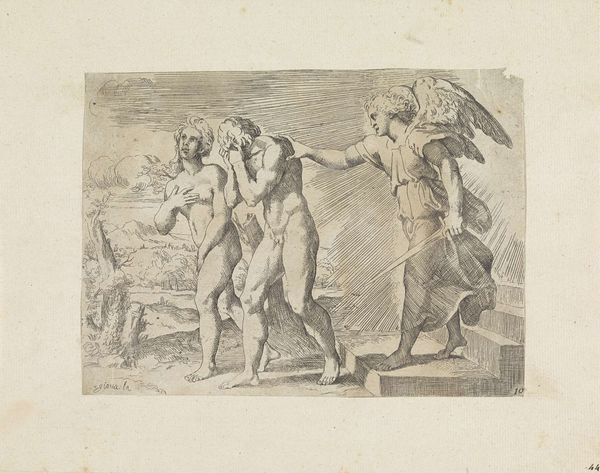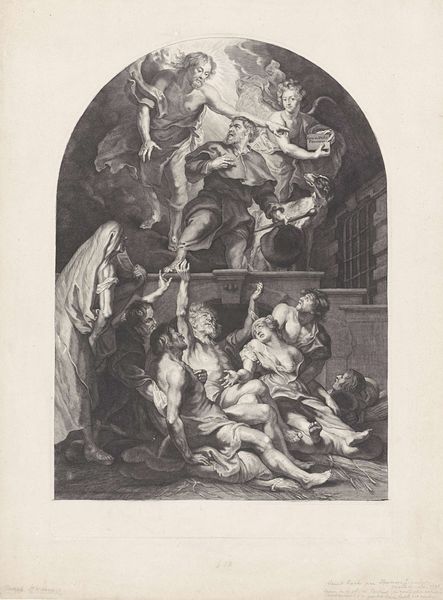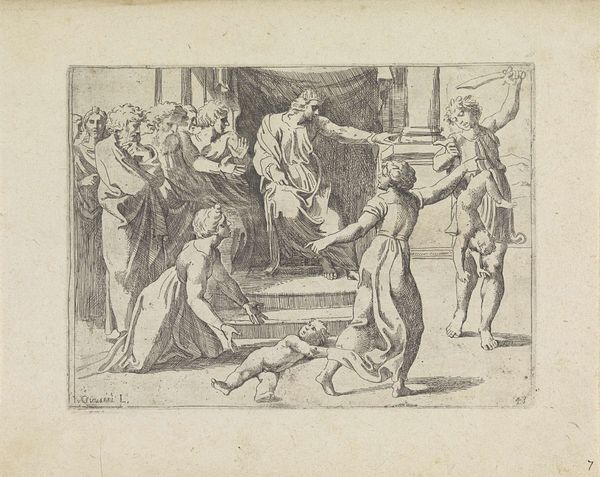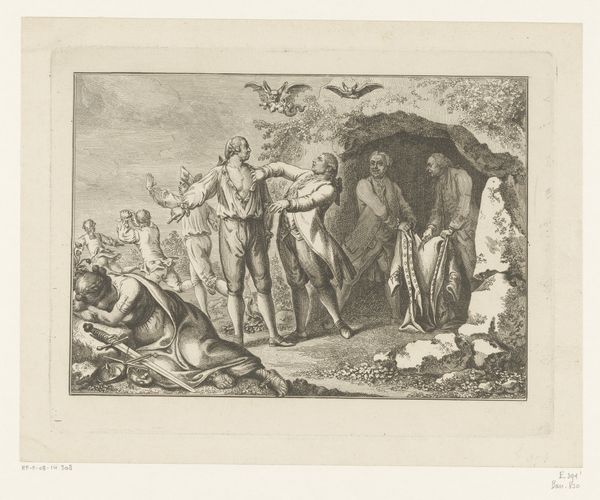
print, etching
#
baroque
# print
#
etching
#
figuration
#
history-painting
Dimensions: height 130 mm, width 176 mm
Copyright: Rijks Museum: Open Domain
Editor: This etching, "Adoration of the Shepherds" by Giovanni Lanfranco, dates back to 1607. It's incredibly detailed, but something about the expressions feels...strained, almost theatrical. What do you see in this piece, considering the context of its creation? Curator: What strikes me is how this work, while depicting a traditional religious scene, participates in the Baroque era's project of renegotiating power. Notice how Lanfranco positions the shepherds – figures traditionally on the margins – within this divine narrative. Their presence complicates the conventional understanding of holiness and access to it. What does it mean that these ordinary, perhaps even destitute, individuals are granted such a profound encounter? Editor: That’s interesting. I was so focused on the drama of the angels, I hadn’t considered the shepherds as actively reshaping the narrative. Are you suggesting Lanfranco might be commenting on social hierarchies? Curator: Precisely! Baroque art often grapples with themes of social upheaval and shifting power dynamics. Think about the historical context: the Reformation, the rise of new merchant classes. Lanfranco's choice to highlight the shepherds can be viewed as a subtle commentary on who deserves to be seen and heard, implicitly critiquing established elitism and advocating for the recognition—and perhaps even the elevation—of the marginalized. Does the composition itself lend itself to such readings? Editor: I think so. The way the shepherds are arranged, drawing our eyes to Mary and Jesus, makes them essential to the visual and narrative flow. It reframes them not just as witnesses, but as active participants. Curator: And that reframing, placing value on the historically overlooked, speaks volumes. Art is rarely created in a vacuum, and understanding the socio-political landscape is crucial to deciphering its message. Editor: That’s a perspective I hadn’t fully considered. It's amazing how much more the piece resonates when viewed through a social and political lens. Curator: Indeed. It invites us to continually question whose stories are being told and, perhaps more importantly, whose are not.
Comments
No comments
Be the first to comment and join the conversation on the ultimate creative platform.
